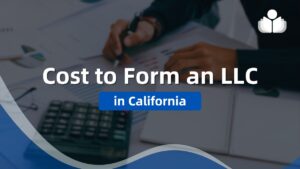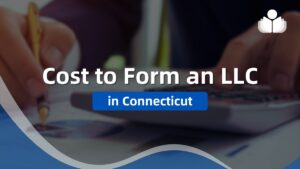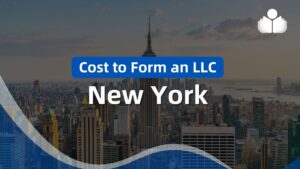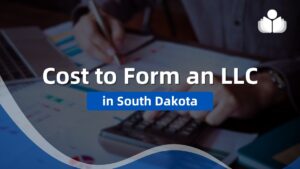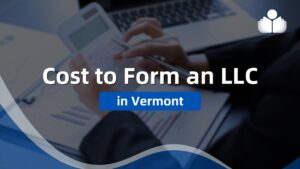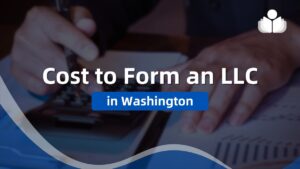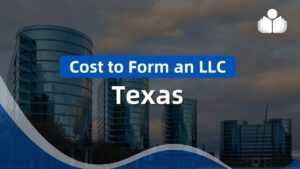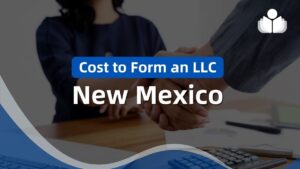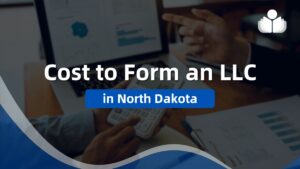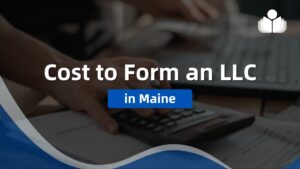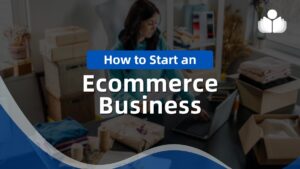© Copyright Carter McNamara, MBA, PhD, Authenticity Consulting, LLC.
As written in Wikipedia, in product development, “The product can be tangible (something physical which one can touch) or intangible (like a service, experience, or belief), though sometimes services and other processes are distinguished from ‘products’.” Although there are additional differences between the nature of a product and service (as explained below), for the sake of expediency, this topic will use the term “products” to refer to both. Also, this topic focuses primarily on the development of a product, rather than primarily on its ongoing management.
Nonprofit organizations often provide services in the form of “programs”, rather than “products” — although the services from the programs are certainly “products or services” to groups of clients. Thus, nonprofit readers might more readily relate to the following guide.
Basic Guidelines for Nonprofit Program Design and Marketing
A nonprofit that is developing a tangible product to generate a profit for the organization (referred to as a Social Enterprise) might benefit from reading the content on this topic about product development.
Sections of This Topic Include
Introduction to Product Development
- What is a Product? A Service?
- What is Product Development?
- Product Development and Product Life Cycles
- Five Different Approaches to Developing Products
- Typical Phases in Carefully Developing Products
Preparation
Developing Your Product
- Phase 1: Generating Ideas
- Phase 2: Researching
- Phase 3: Testing
- Phase 4: Analyzing
- Phase 5: Rolling Out
- Additional Perspectives on Product Development
Also, consider
Learn More in the Library’s Blogs Related to Entrepreneurship — Product and Service Development
In addition to the articles on this current page, also see the following blogs that have posts related to Entrepreneurship — Product and Service Development. Scan down the blog’s page to see various posts. Also, see the section “Recent Blog Posts” in the sidebar of the blog or click on “Next” near the bottom of a post in the blog. The blog also links to numerous free related resources.
- Library’s Business Planning Blog
- Library’s Building a Business Blog
- Library’s Customer Service Blog
- Library’s Leadership Blog
- Library’s Supervision Blog
What is a Product? A Service?
Basically, a product is a tangible offering to a customer, whereas a service is an intangible offering. The former is usually a one-time exchange for value. In contrast, a service usually involves a longer period of time. The value of a product is inherent in the tangible offering itself, for example, in the can of paint or a pair of pants. In contrast, the value of a service often comes from the eventual benefit that the customer perceives from the time while using the service. In addition, the customer often judges the value of a service based on the quality of the relationship between the provider and the customer while using the service. To understand more differences, see
What is Product Development?
The Entrepreneur website defines product development as “The overall process of strategy, organization, concept generation, product and marketing plan creation and evaluation, and commercialization of a new product.” That site also suggests eight situations when product development is needed. Also see:
- New Product Development
- What is Product Development?
- What Is the Difference Between Product Management, Product Marketing, Product Development, and Program Management?
Therefore, product development includes a wide range of activities, ranging from the time that there is a new idea for a product to the ongoing management activities to produce and provide the product to customers. (The latter is referred to by the phrase “product management.”) How a product is developed depends very much on the nature of the organization and its products, for example, retail, manufacturing, or wholesale. It also depends on the culture of the organization, for example, whether products are developed intentionally and explicitly or unintentionally and implicitly.
Product Development and Product Life Cycles
Products, just like people and organizations, go through various phases in their lives (Basic Overview of Life Cycles in Organizations). Different experts suggest different stages in the life cycle and give them different names. It helps a great deal to know about different phases in the life of an organization or product because it suggests the types of activities that are typically seen in each phase, as well as what activities to do to evolve to the next phase.
For example, the following article suggests Development, Introduction, Growth, Maturity, and Decline. Product development occurs primarily during the first phase. The typical final phase of product development is when it is launched or promoted to potential clients. That final phase could be included in the Introduction phase of the product’s life cycle.
Product Life Cycle & Product Development Cycle
Five Different Approaches to Development Products
There are at least five different common approaches to developing a new product. Some approaches seem to start out slow and soon stop altogether. Other approaches start out fast and then end in a flurry of confusion. Still, other approaches start out carefully and go on to make a huge difference for their customers. The approaches include:
- “Build It and They Will Come” Approach
- Seat-of-the-Pants Approach
- Incremental Planning Approach
- Business Planning Approach
- Business Development Approach
Approaches to Developing Products and Services
Typical Phases in Carefully Developing Products
There are a variety of models, or sequences of phases, that people use to develop a product or service, including:
- Fuzzy front-end, including informal sharing and clarification of ideas for the new product.
- Product design, including activities that result in a detailed set of specifications for the product’s design.
- Product implementation, including refining the specifications by testing them, often through the development and use of a sample (or prototype) of the product.
- Fuzzy back-end, including producing the new product and rolling it out to potential markets.
The following article suggests five phases similar to the above in product development, including the following.
- Idea generation (creativity and innovation, brainstorming, competitor research)
- Research and development (market research, design thinking, prototyping, feasibility testing)
- Testing (focus groups, customer surveys)
- Analysis (feedback, interviews, pricing, problem-solving and decision making, financial projections)
- Rollout (marketing, business planning, advertising, social media)
The following content in this topic is according to this five-phase model, also listed above.
Five Phases of New Product Development
These articles suggest various phases, too.
- 8-Step Process Perfects New Product Development
- Product Development: The 7 Steps of Effective Product Development
- How to Develop a New Product (From Concept to Market) (6 steps)
These articles mentioned numerous models, as well.
Preparation
Are You Really Ready?
It’s one thing to have a good idea for a new product or service, but it’s another thing to actually develop and provide it — that’s the essence of entrepreneurship. The following link is to a resource that will guide you through a complete consideration of whether you’re really ready for entrepreneurship or not.
Entrepreneurs — Are You Really Ready to Start a New Venture?
First Broaden Your Perspective
Many of the activities in product development are also activities in the overall process of marketing.
- Basics of Marketing (from idea to evaluating to developing to producing)
- Life Cycles in Organizations (everything has a life cycle, including products)
If the reader is highly motivated at this point, then he or she might scan the information about the basics of business planning. Business planning is usually conducted when starting a new organization or a new major venture, for example, a new product, service, or program. Essentially, a business plan is a combination of a marketing plan, strategic plan, operational/management plan, and financial plan. Funders or investors usually require a business plan. Far more important than the plan document, is the planning process itself.
Basics of Business Planning
Planning New Business in Addition to Product?
If you are planning to start a new for-profit business or nonprofit business around your idea for a new product or service, then you will benefit from reading information in the topics Starting a For-Profit Business or Starting a Nonprofit Organization. Note that information in these two topics will guide you through assessing the feasibility of your new business — information in the rest of this topic about product management will include assessing the feasibility of developing a new product. It’s likely that if you are starting a new business, you will eventually need information on the rest of this topic about product development.
Phase 1 — Generating Ideas
Many Sources of Ideas
At this stage, someone has an idea for a new product or service. Ideas can come from many sources, for example:
- Complaints from current customers (see Customer Service and Customer Satisfaction).
- Requests for Proposals from large businesses and government agencies.
- Modifications to current products (see Innovation).
- Suggestions from employees, customers, and suppliers (see Creative Thinking).
- You can learn a lot from analyzing your competitors (see Competitor Research).
Protect Your Ideas
It’s likely that someone else will think your idea is a good one, too! Therefore, it’s important to protect your idea as much as possible, for example, by getting copyrights, trademarks, or patents. See U.S. Intellectual Property Law
You might also want to minimize the chance of an employee taking the idea and starting their own business. See
Non-Compete Agreements
Phase 2 — Researching
Is the Idea Feasible? Viable?
Just because it seems like a great idea doesn’t mean that it can become a product. A feasible product is one that can be realistically developed and delivered to meet the needs of potential clients. A viable product is one that needs to be profitable (or, in the case of a nonprofit, at least sustainable), including being producible and marketable.
Also, the product should be related to the purpose, or mission, of your business. Businesses can go bankrupt by trying to be too many things to too many customers, rather than doing a few things very well. You might use guidelines from these relevant topics.
Need an Investor or Funder for Your Idea?
For-profits that need investment money will benefit from the following link.
Fundraising (For-Profit)
Nonprofits that need funding will benefit from the following link.
Fundraising (Nonprofit)
As noted above, you very well may need a business plan to convince the investor or funder that your idea is viable to become or product or service. See Basics of Business Planning
Phase 3 – Testing
What Will Customers Think of Your Ideas?
Now is the time to get input from those who would be using the new product. When products have very low sales, it is often because the developers have more faith in their own preferences than in those of the customers.
But before you can get input from the potential customers, think about who those groups (or target markets) might be. Thank about:
- Where did you get the ideas to develop the products in the first place?
- Who is using products that seem similar to those that you are thinking about developing?
- What have you been hearing and reading about regarding strong unmet needs among various groups of people? What might meet those needs? Are those needs within the scope of your organization’s mission and capabilities?
How to Get Feedback From Customers
There are a wide variety of ways to get feedback from customers. The most common are using the following tools.
A powerful way to get very useful feedback, especially regarding ideas to improve your new product, is to use design thinking. It is unique in that it is a hands-on approach that deeply involves the people (the users) who are affected by their problems or unmet needs.
Design thinking
At this point, you’ve concluded that your idea can become a viable product. Now you’re faced with actually building the product itself. The particular process you use to build your product or service depends very much on the nature of the product or service. The following links might help you as you develop your unique process to build your product.
Now’s the time to write an overall, or functional, description of your new product. The more detailed description comes during the next phase.
What Are Functional Specifications
Phase 4 — Analyzing
What Have You Learned So Far?
Now is a good time to consider:
- What did you hear from potential customers?
- What changes are needed to your original design?
- How will you make them, who will do it, and by when?
- What will the changes cost to implement? To continue to produce?
- Who will be your primary target market? What are the primary needs and wants of that target market?
- What is the likely cost to develop and produce the product?
- So what pricing structure should you use?
- Who will be the primary competitors of your final product?
These questions are often answered when developing a business plan for your new product.
All About Business Planning
What About Design Specifications? Project Planning?
You certainly should develop and implement of a project plan to build your product.
Project Planning (method to carefully plan and track development of the product/service)
Businesses are coming to learn that it’s never too early to integrate principles of quality management into the design and development of products and services.
What about a final written specification that employees can use to develop and provide the product?
- Building a Requirements Document
- Inside Technical Specifications
- Displaying Technical Writing Skills
Phase 5 — Rolling Out
Developing Your Marketing Plan
Now you are ready to get the word out about your new product. Especially for a new product, it is very important to do that very carefully and systematically. It is not a time to start bursting out whatever positive messages that you have to convey to anyone who will listen. That would be a major mistake.
The place to start is to understand what goes into a marketing plan. See the following topics in the following order:
Why Should Customers Buy From You?
What are the unique features and benefits of the new product? Why should customers buy from you, rather than from competitors? The answer to this question is your positioning statement.
Clarifying Your Unique Selling Position — Your Best “Elevator” Pitch
What Will You Convey to Your Customers?
Draft a communications plan with answers to:
- What are the different target markets that you aim to serve?
- What do you want each to believe about your new product?
- How does each market prefer to get communications, for example, radio, television, postal mail, phone calls, emails, or flyers?
- So what messages do you want to convey to each and how?
- Who will do that and by when?
There are numerous methods to get the word out.
Major Methods of Advertising and Promotion (Methods of External Communications)
Do not forget about the power of using social media.
Social Networking
Also, see
Additional Perspectives on Product Development
- Intellectual Discipline in Product Development
- Creating a Strategic Product Plan
- New Product Development Stages
- Getting the Most out of Your Product Development Process
- 5 Insights for Improving Product Development Cycle Success
- The Lean Product Lifecycle
- The Cycle of Mistrust in New Products
- Reading: Overview of the New-Product Development Process
- Measuring Product Development Time to Improve the Development Process
- Product Development Cycle Fundamentals
For the Category of Product Development:
To round out your knowledge of this Library topic, you may want to review some related topics, available from the link below. Each of the related topics includes free, online resources.
Also, scan the Recommended Books listed below. They have been selected for their relevance and highly practical nature.
 Sections of this topic
Sections of this topic


